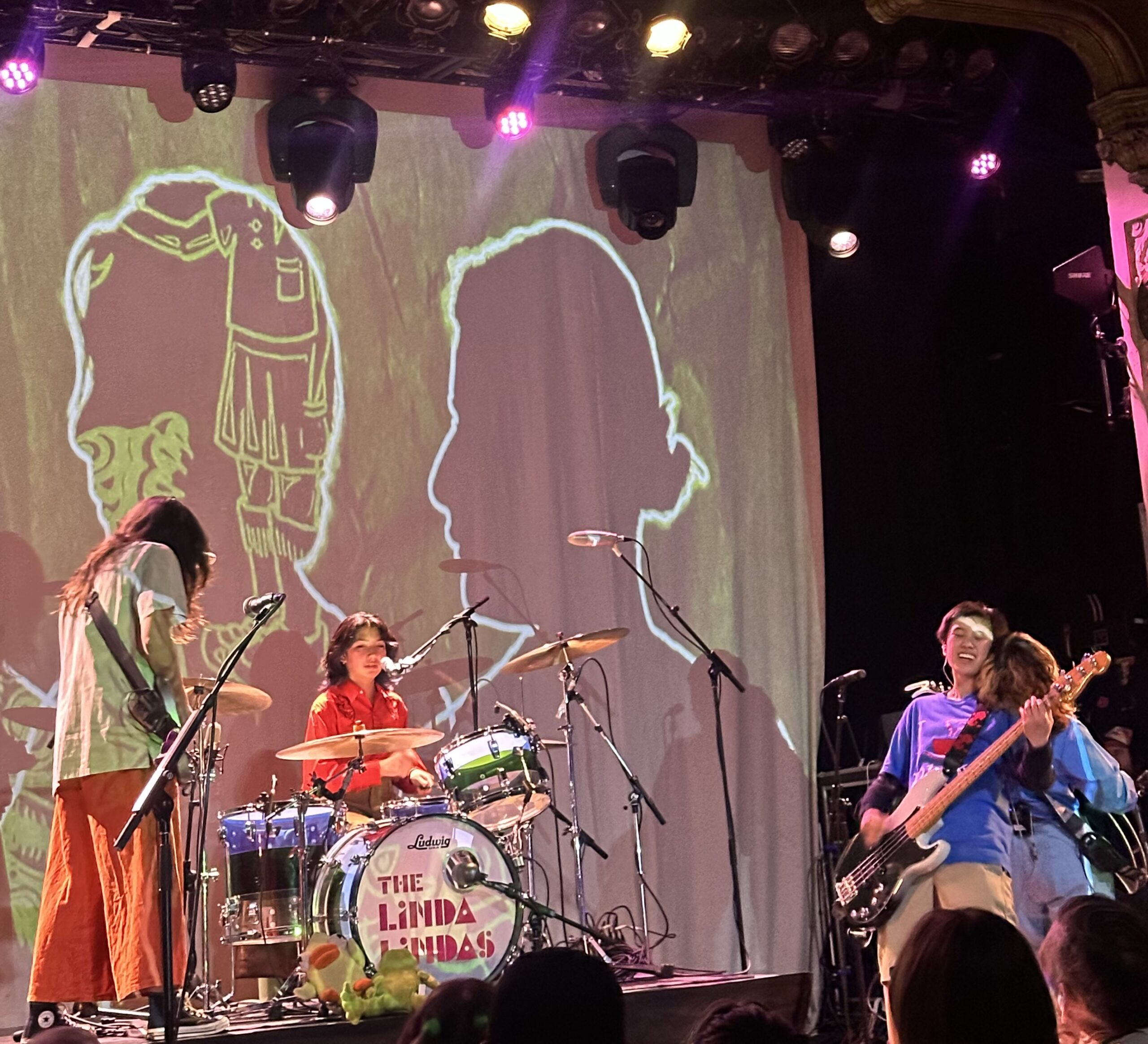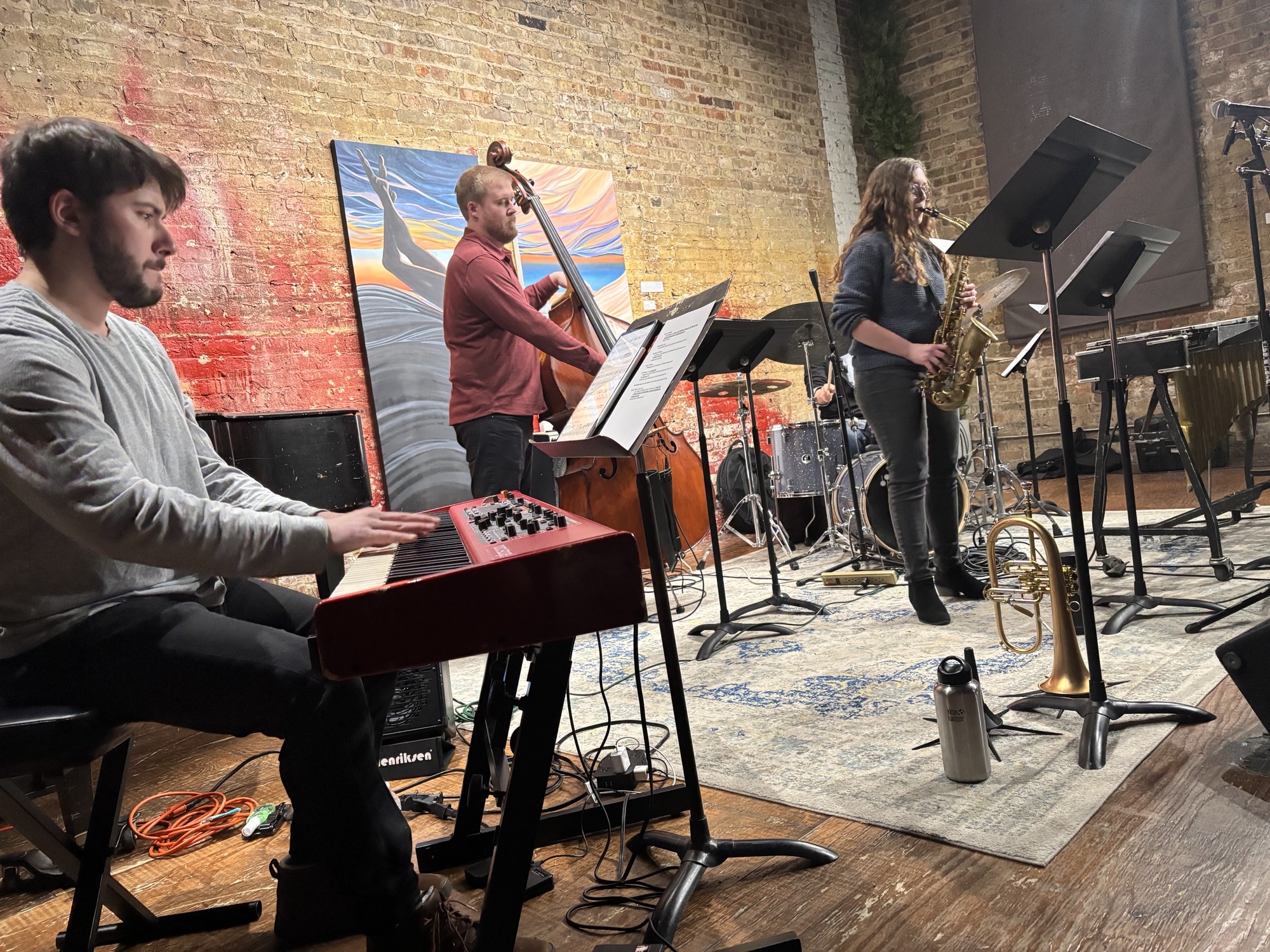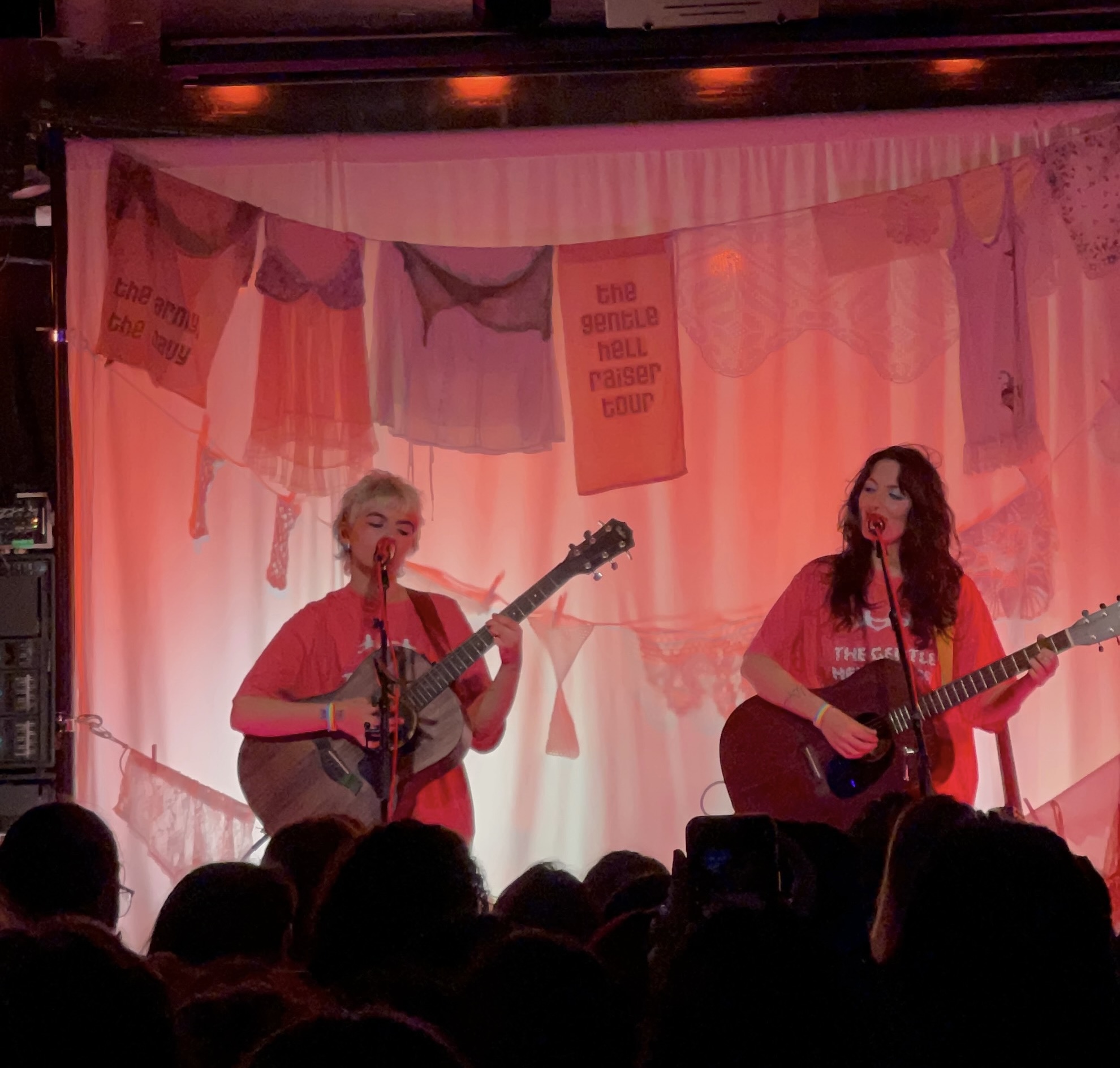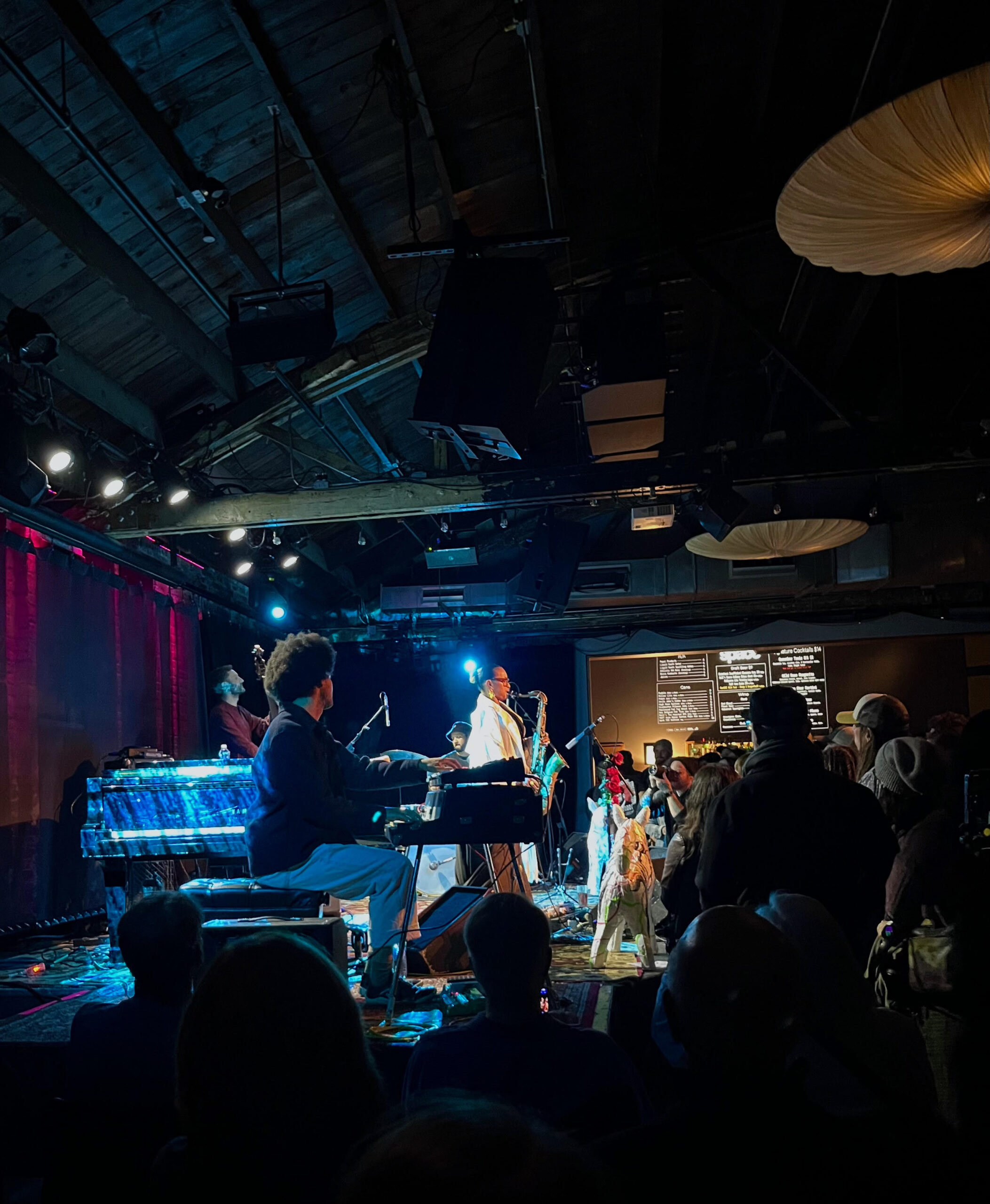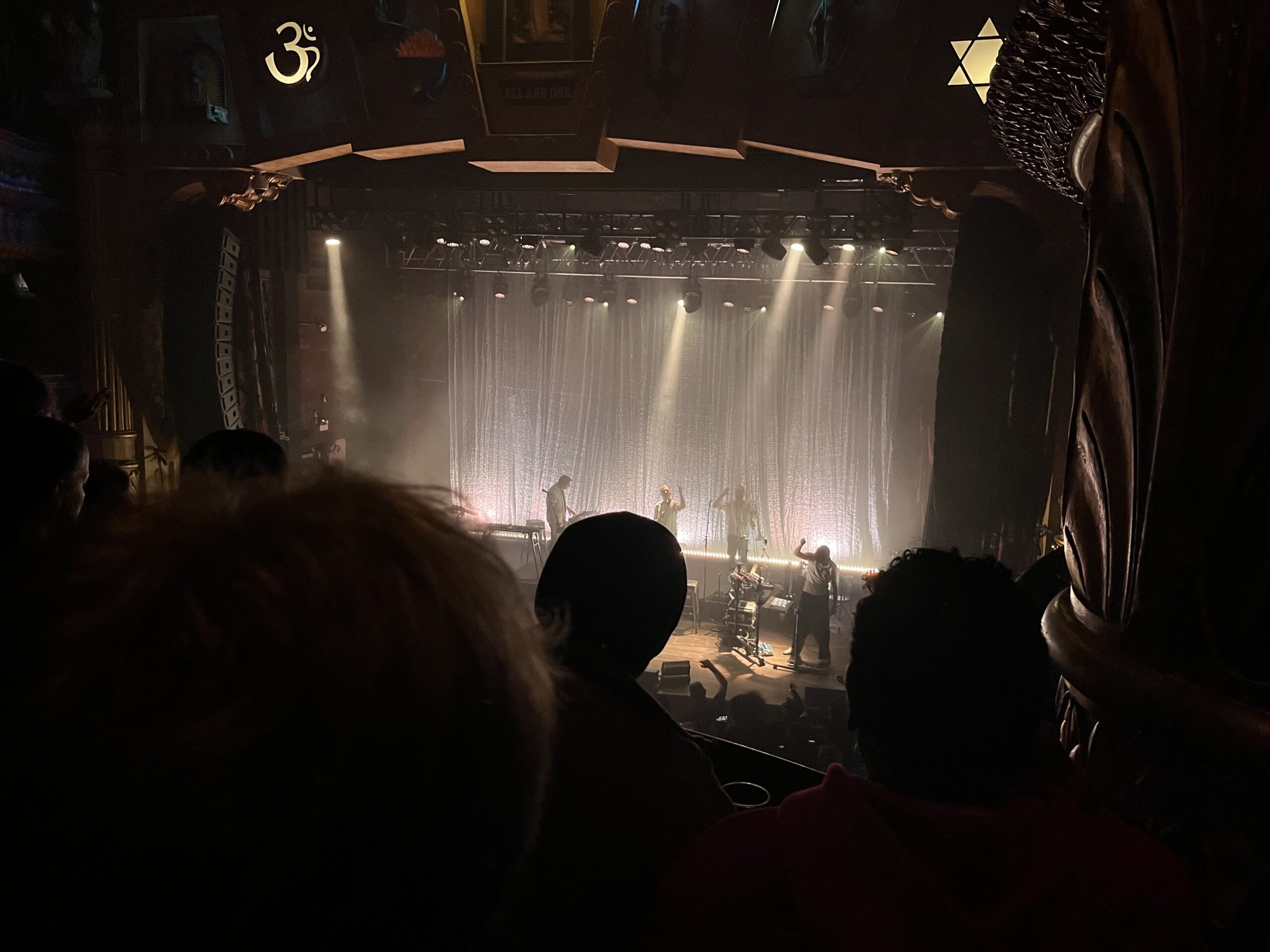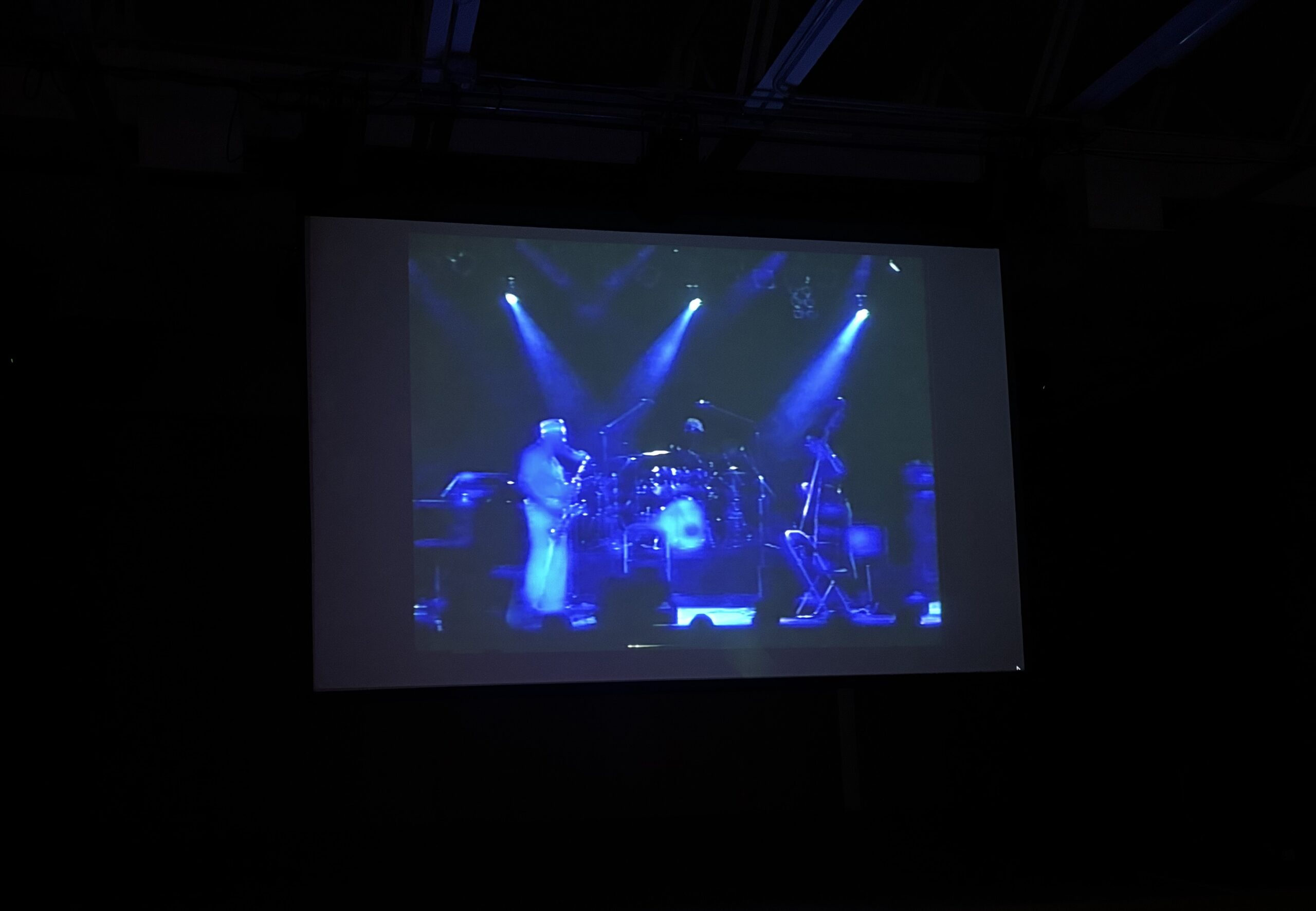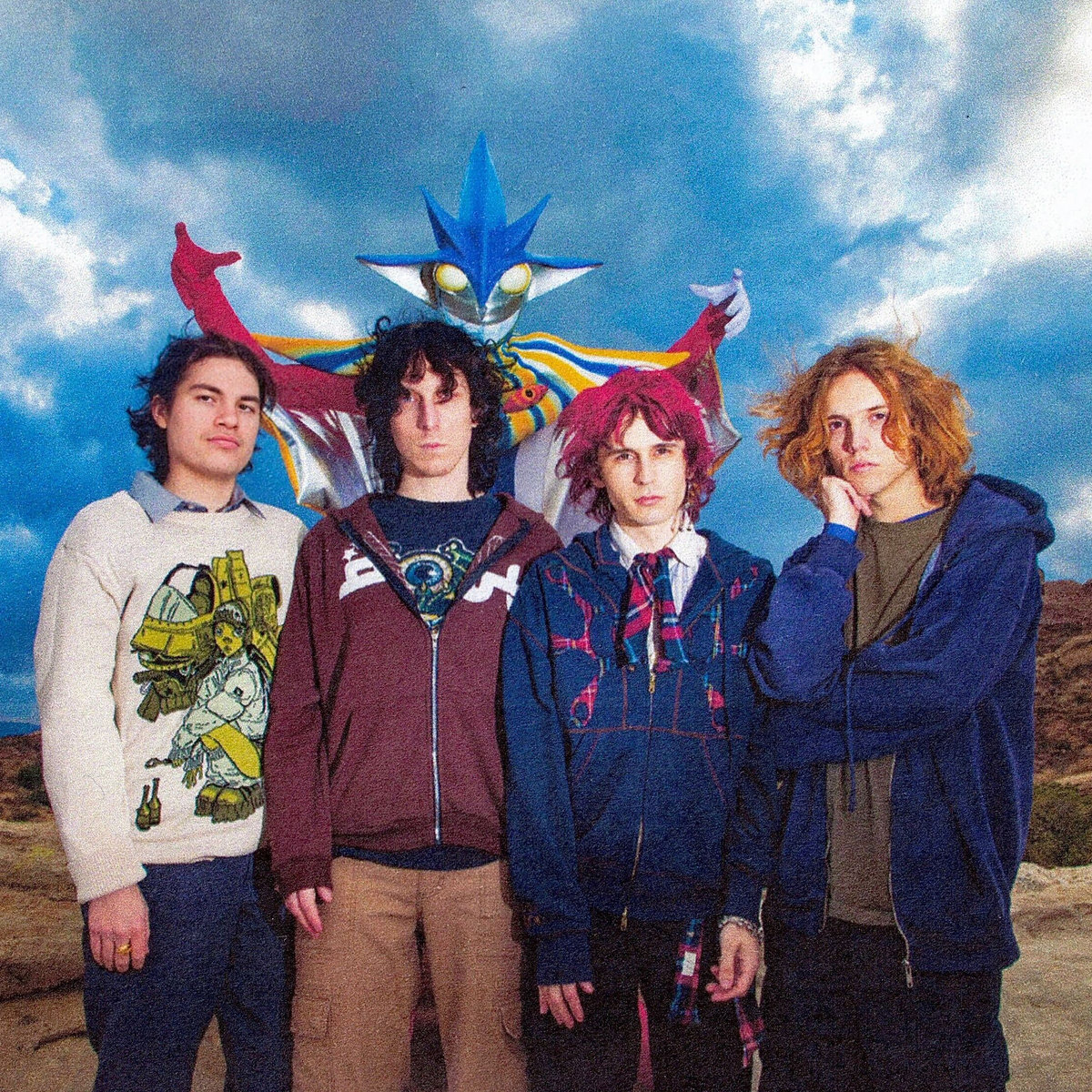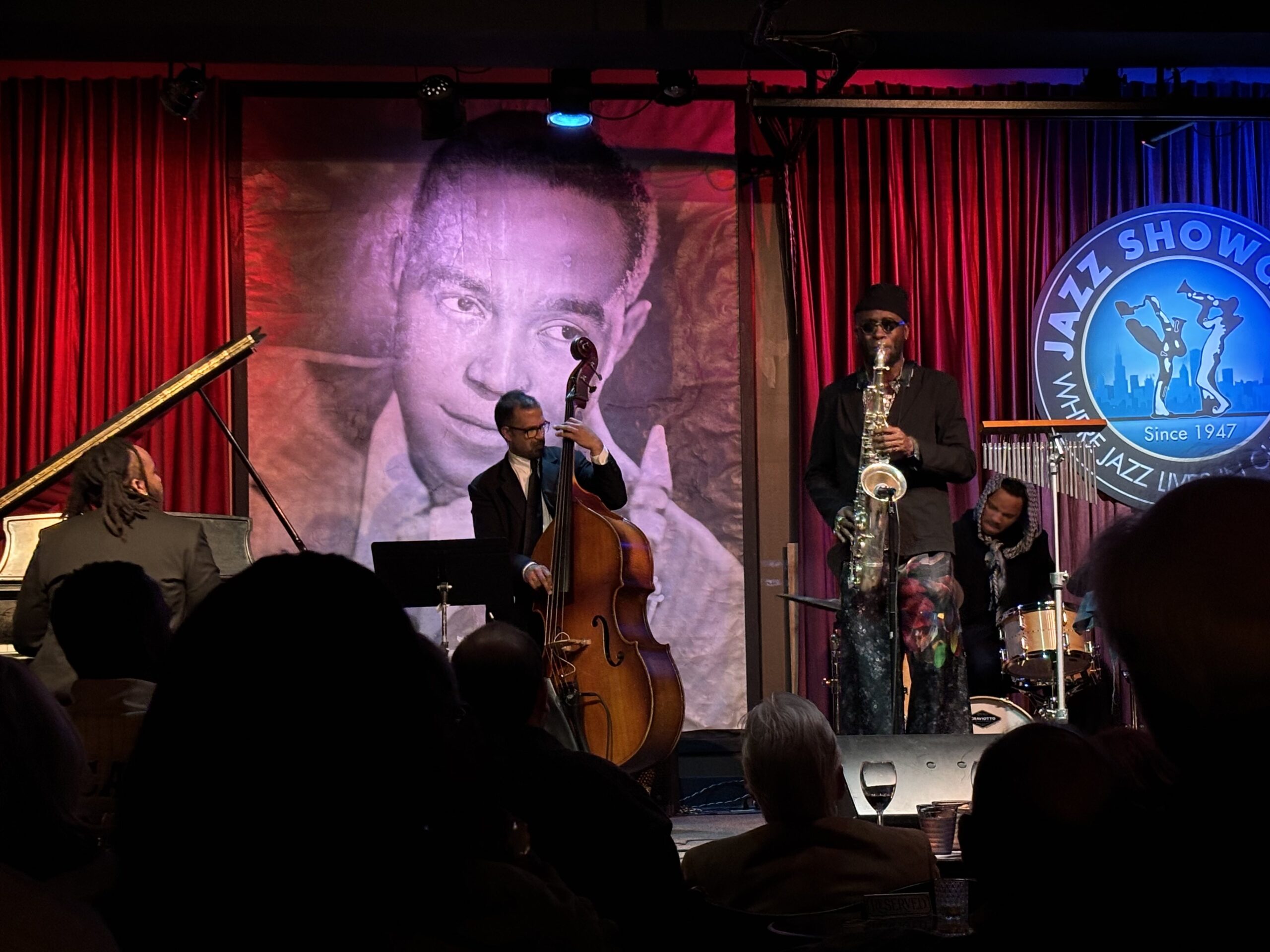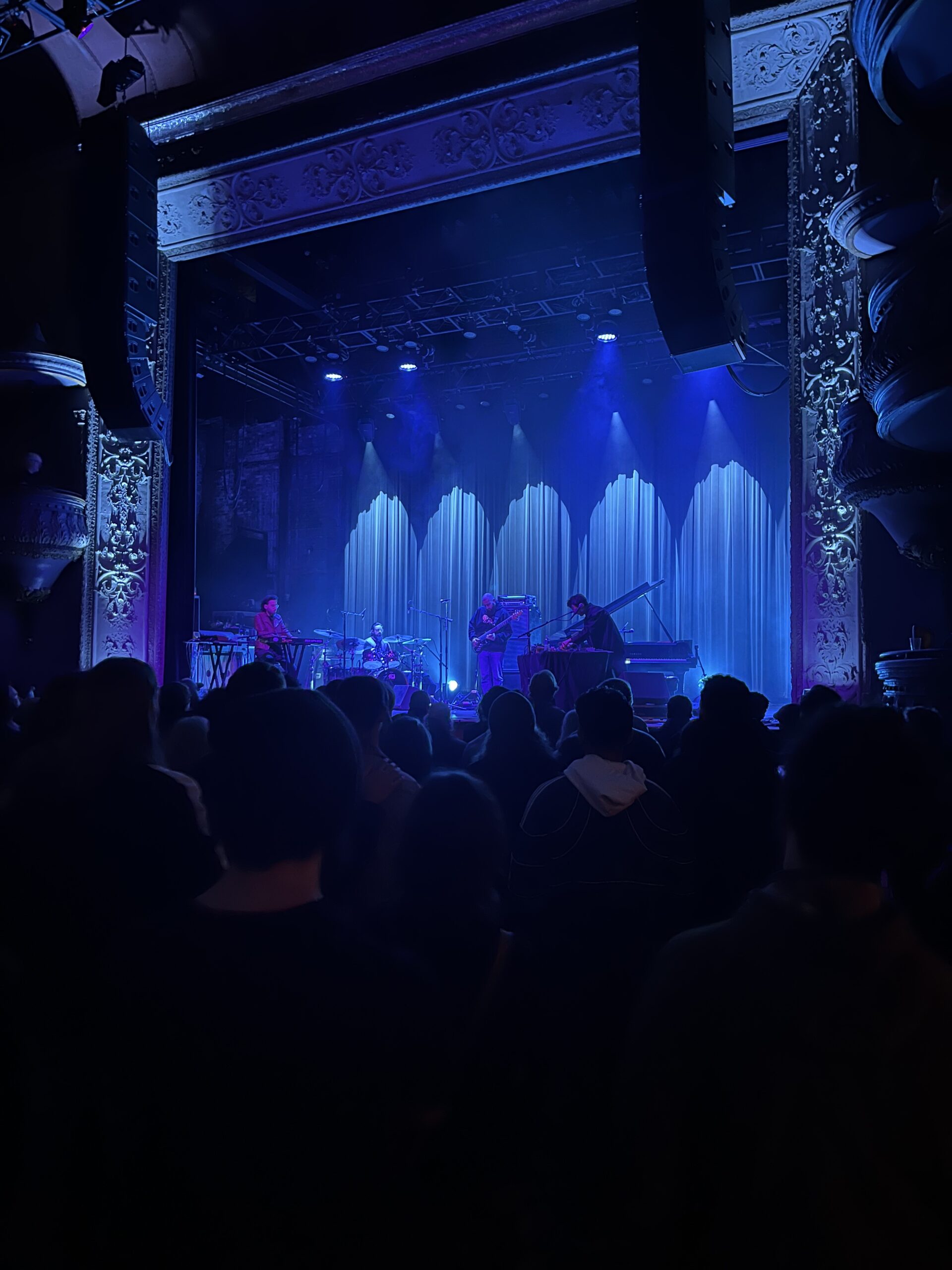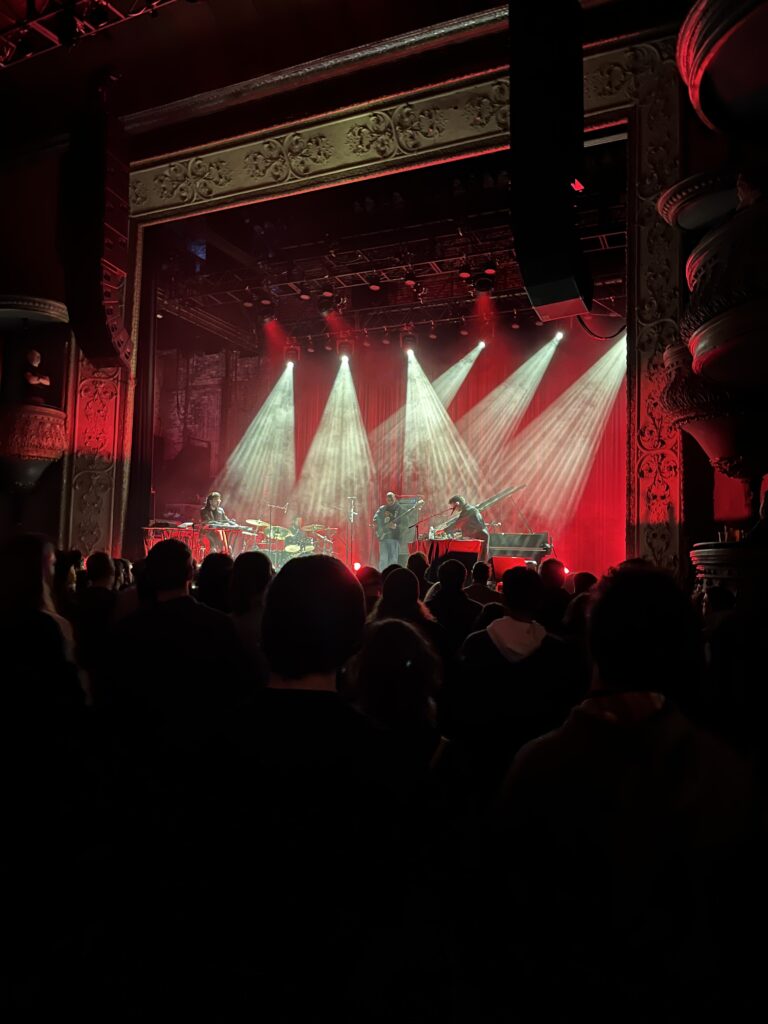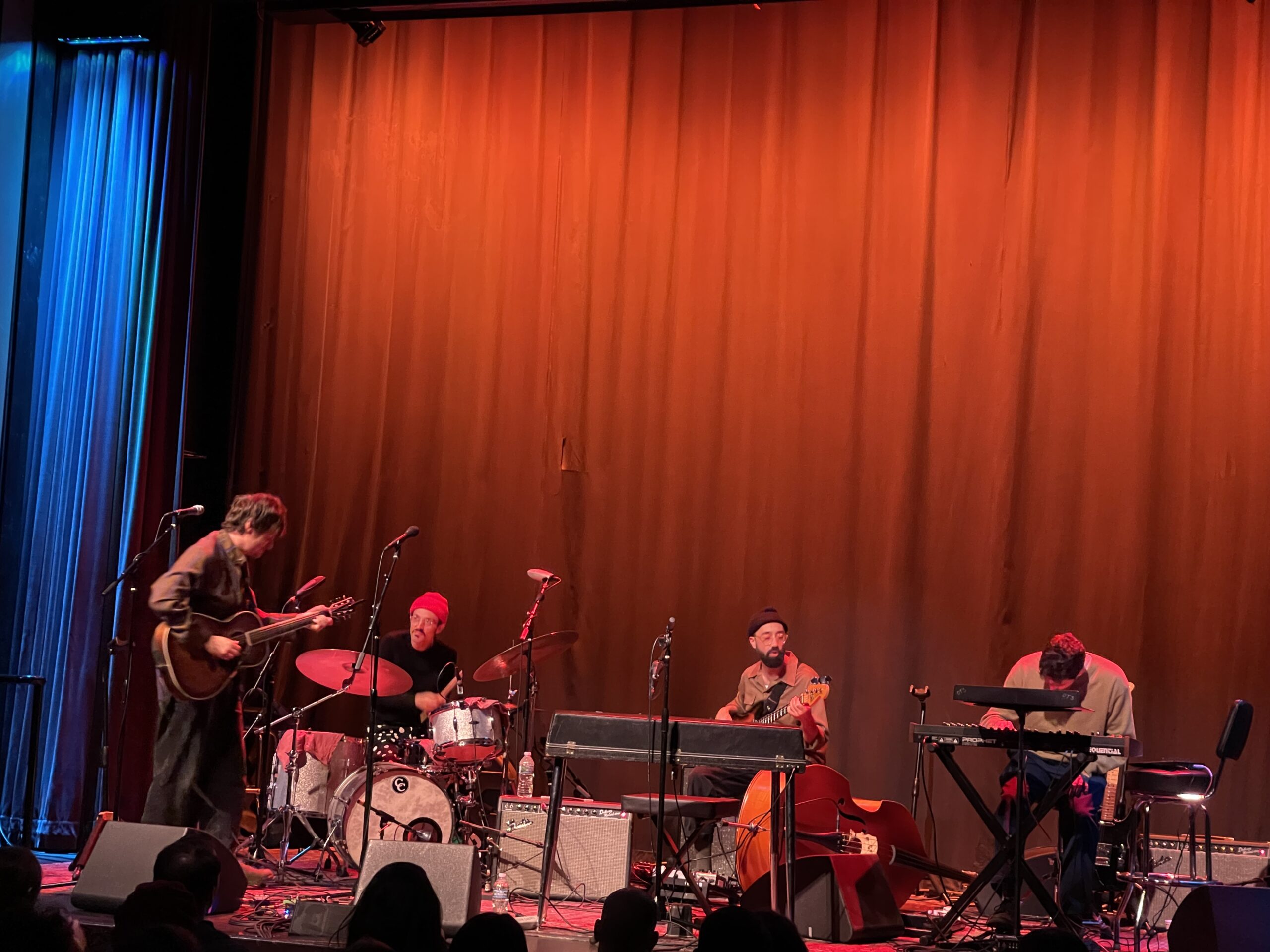By: Leonardo Fontane
On Wednesday March 10th I was lucky enough to sit down and have an interview at the Fulton Street Collective with saxophonist, musician, and educator Maddie Vogler and talk about her first album “While We Have Time.” An encapsulating 9 tracks on Vogler’s album serves as a project forged by the generations of women in her family before her who inspired her to create this project and its music.
This interview gives a peek behind the curtain on how Vogler’s album came together and what inspired it, as well as a review of her sextet’s performance at the collective that night.
Leonardo : I want to start out “simple”, what was the process of bringing this album together for you?
Maddie Volger: It took a long time overall because some of the music in the album started as small pieces of songs, and a lot of it happened during the pandemic because I didn’t have to be teaching so many hours in person. Especially in the spring of 2020 as schools pretty much shut down. As a result there was a lot of time to write and work through ideas, and at the same time I was getting my master’s in music education, so I was able to reconnect with Tito (Tito Carillo is a jazz trumpeter, composer, and arranger who is the trumpeter on Voglers album and served as a mentor for her in her musical journey). When I shared some of my music with him, he said that I needed to record it and I didn’t feel ready, but he really encouraged me to record and that was a big moment where I realized that I should get into the studio and record this music. At that point it was the process of polishing the compositions. Booking a few gigs, did some editing, and then just got into the studio and “made” what you hear.
L: That ties into another question I had. For you what was breaking through that “first release” barrier like, I know many people state that as being what can be hard for them when trying to create something of their own.
MV: I think it was hard and if I didn’t have the people around me pushing me to record it wouldn’t be the same. At the time I viewed myself as more of a “teacher” and wasn’t sure if this was the right path for me, but I came to realize that it doesn’t matter. If you have content, you should just record and release. Of course, you do make for others in certain way which has been amazing as I’ve been able to see so much response and connect with so many people. But having that marker of your musicianship, who you are, what you made at that time, and who you were able to collaborate with at that time is just really special.
L: I was wondering if you could speak more on what is important about the group you choose to record and play with,
MV: I think a lot of it is about finding people who bring their joy of music making and are comfortable with contributing and giving feedback. Being able to have Tito be a part of this album was really special for us both as he has been my number one musical mentor in my life.
L: Now I know that this album cover has a story behind it and I was hoping if you could explain that fully to give a better understanding of what this album is about.
MV: Yes, I found the artist for the cover “Diana Cisneros” because she was a Luminarts fellow. She had a version of the cover as her own hands which caught my eye. The piece talked about her family and heritage, and I had known from the start that such ideas were the core of this album and its music. Once we connected, I wanted to use my grandmothers’ hands as the cover to show that line of women before me. As a debut album it also felt very impactful as it expressed the ideas of who and where I come from as a person. Both my grandmothers have deeply influenced who I am, so I wanted the cover to showcase one hand from each of them clasped together. Both hands wear jewelry from their families, so one has rosary beads from Cuban and my other grandmother has on a bracelet which her parents gave her. Coincidentally both had rings from their pinky fingers which we gifted down to them, so this lineage of women was really able to be captured in one painting.
L: Do you feel as if those details contribute to what you wanted to center this album around?
MV: Totally, I have the original artwork in the room that I practice in, so being able to think about those thoughts whenever I look at it is special.
L: Going back to being an educator, is there something you hope you students get out of seeing their own teacher go out and make a record.
MV: Absolutely, I feel that it makes the conversation of telling someone they are ready to put their work out has become easier. In a way I can become the “Tito” for whatever student I’m connecting with on that level. Which is an extremely important part of teaching, carrying on that line of those who taught and inspired you powerfully. This experience puts that perspective on, “I know how you feel, but you are ready to put this work out” when working with students. I also feel that it has been surprising just how much my journey resonated with my own students. For instance, a student of mine has made an arrangement of my song “Sunday Colors” for our end of year concert which really shows that impact concretely. It wasn’t something I fully realized until I saw how interested students became in the process and small details of this album.
L: You spoke a little earlier on how you have been impacted by the warm reception of your work. What it has been like not to just play but perform your own music at amazing places like the jazz showcase and Chicago jazz fest. Overall, what has the experience of being on the other side of the stage felt like for you?
MV: I think that it has felt a bit weird. I remember being a kid going to the Chicago jazz fest and seeing these spectacular performances which just blew me away. But I never really thought about what it would be like to be on the other side of that experience. It has felt surreal and almost like aging. You feel the same at the core as stuff changes around you. I’ve been able to meet so many great people which has helped me find a place in the Chicago scene but of course being a classroom teacher still does create a barrier from getting super deep in the scene. However, the album putting me out there has really created great relationships.
L: Now being a year and a half out from release do you feel like your perspective has compared to how you thought things would go.
MV: I think the answer is a bit of yes and no. Yes, in the way that I feel more comfortable in the idea of making my next project, so it feels like I have more agency in that regard compared to before. But of course, things still feel familiar, and my teaching still has its own rhythm compared to this.
L: As a final question to shift more toward you, I was wondering who you have been listening to recently.
MV: Recently I went to see Shai Maestro with Jake (Jake Shapiro is the pianist Maddie often plays with and is one of the musicians who recorded “While We Have Time” with her) at ‘Constellation’ a few months back and it was an amazing performance. The organic chemistry they all had today was extremely impressive, which prompted me to dig deeper into that listening than ever before. Outside of that, listening to “Cowboy Carter” has come back for me. I really love that project. There is so much in there for so many different people that when I talk about it with friends who are into country music, I still see new perspectives on it. I also value the message of reclamation she made with that project as it gives even more to that work. I’ve also really been digging the new Bad Bunny album, the beat drop on the first song is just so good.
L: That’s all I have for you today, thank you so much for your time and helping us better understand this amazing project you have made.
“While We Have Time” is out on all streaming platforms and is available for purchase through Maddie Vogler’s website. A phenomenal album, I hope anyone who reads this interview checks it out. I have endless admiration and respect for Maddie’s artistic work, and work as an educator.
Look out for all the shows she is performing at, as she continues to showcase new incredible music.
-L
